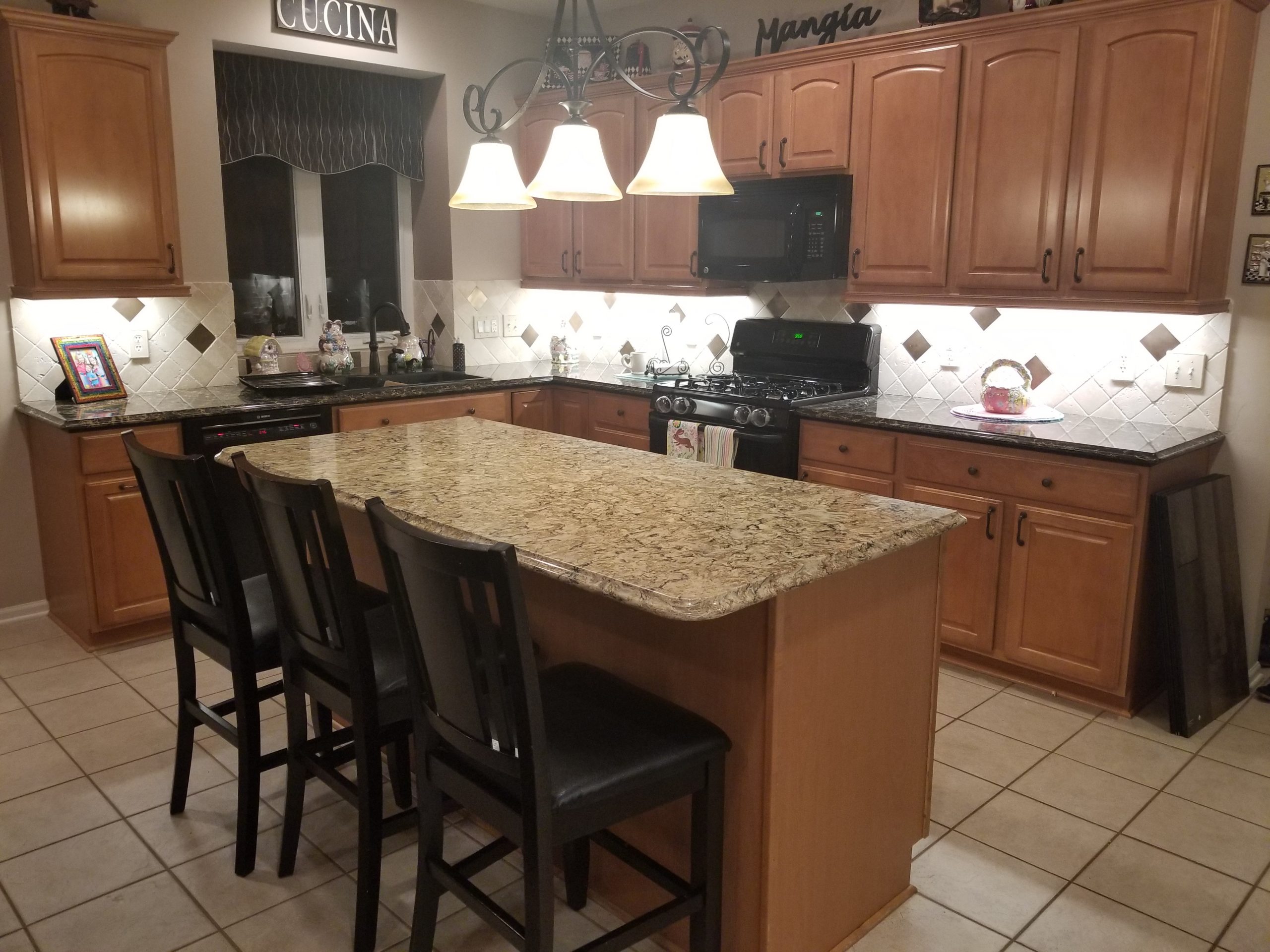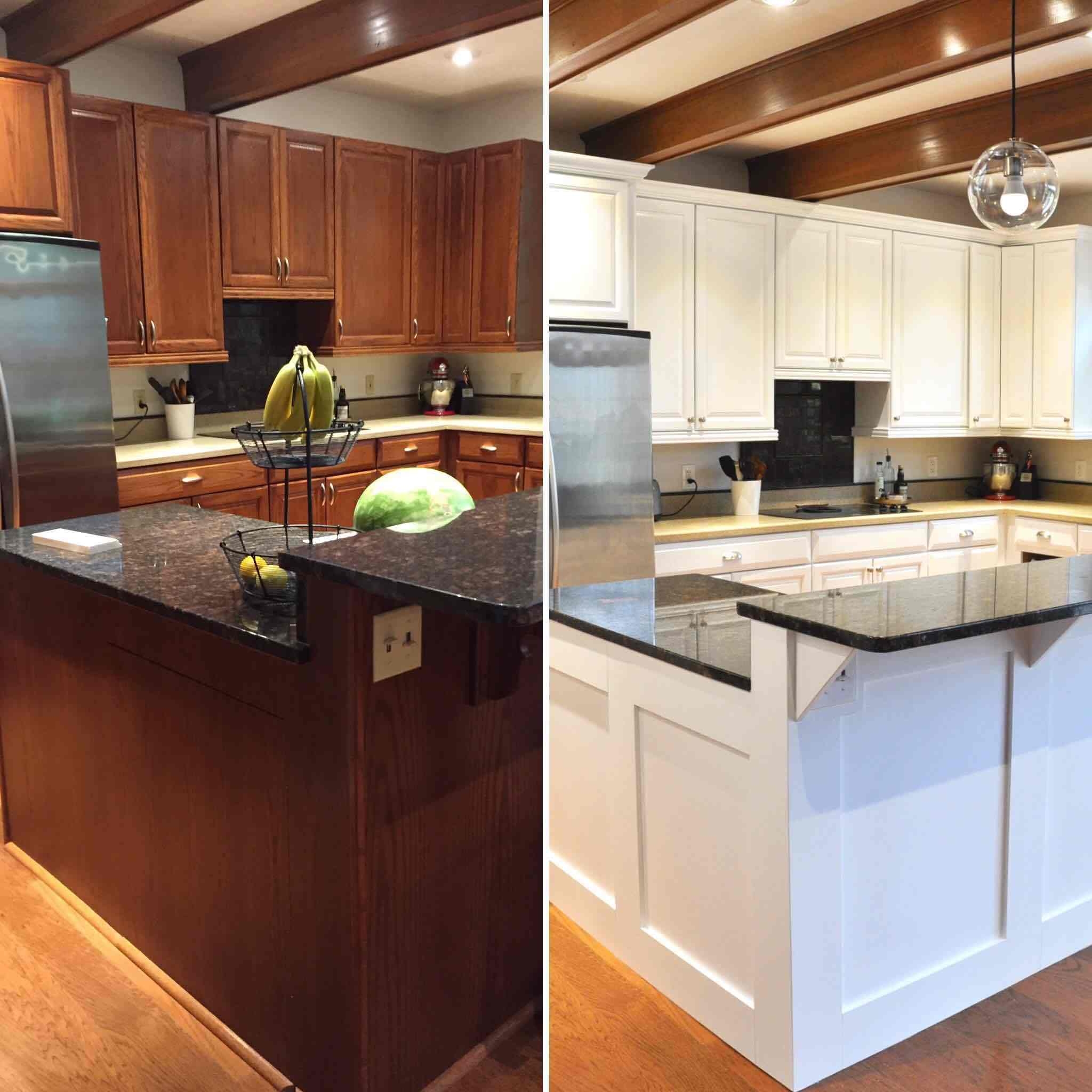Painting Cabinets Before Countertops

Painting cabinets before installing countertops offers several advantages, particularly in terms of ease of work and minimizing potential damage. This approach allows for a more controlled and efficient painting process, ensuring a clean and professional finish.
Benefits of Painting Cabinets Before Countertops, Paint cabinets before or after countertops
Painting cabinets before installing countertops provides a cleaner and more controlled environment for the painting process. This approach minimizes the risk of paint splatters or spills on the new countertops, which can be difficult to remove and may compromise their appearance. Additionally, working with cabinets in a detached state allows for easier access to all sides and surfaces, enabling a thorough and even paint application.
Painting Cabinets Before Countertops: A Step-by-Step Guide
- Preparation: Before starting the painting process, it’s crucial to prepare the cabinets thoroughly. This involves removing all hardware, such as doors, drawers, and hinges. Next, clean the cabinets using a degreaser to remove any dirt, grease, or grime. Sand the surfaces lightly to create a smooth and even base for the paint. Finally, apply a primer to enhance adhesion and create a uniform surface for the paint.
- Painting Technique: When applying paint, use high-quality brushes or rollers designed for cabinets. Start by painting the cabinet doors and drawers, ensuring even coverage and avoiding drips or runs. Apply thin coats and allow each coat to dry completely before applying the next. For a professional finish, consider using a spray gun, which can provide a smooth and consistent application.
- Drying Time: Allow the paint to dry completely according to the manufacturer’s instructions. Typically, it takes 24 hours for the paint to cure fully. Avoid touching or handling the painted surfaces during this time to prevent smudging or damage.
Comparing Painting Cabinets Before and After Countertops
| Painting Cabinets Before Countertops | Painting Cabinets After Countertops | |
|---|---|---|
| Ease of Cleanup | Easier to clean up paint spills and splatters | More challenging to clean up spills, potentially damaging countertops |
| Risk of Damage | Lower risk of damaging countertops | Higher risk of damaging countertops with paint spills |
| Accessibility | Easier access to all sides of the cabinets for painting | Limited access to certain areas of the cabinets |
| Professional Finish | Greater control over the painting process, leading to a more professional finish | Potential for uneven paint application due to limited access |
Painting Cabinets After Countertops: Paint Cabinets Before Or After Countertops

Painting cabinets after countertops have been installed presents a unique set of advantages, offering a clean and organized approach to kitchen renovation. It allows for a more cohesive and finished look, minimizing the risk of paint splatters on your new countertops.
Painting Cabinets After Countertops: Advantages
Painting cabinets after countertops are installed offers a distinct advantage: a seamless and polished finish. This approach allows for precise painting without worrying about damaging the countertops. Additionally, it provides a clean and organized workspace, minimizing the risk of paint splatters or drips. This method ensures that your new countertops remain pristine, enhancing the overall visual appeal of your kitchen.
Step-by-Step Guide: Painting Cabinets After Countertops
This section provides a step-by-step guide to painting cabinets after countertops, ensuring a successful and visually appealing outcome.
Preparing the Cabinets
Prior to painting, thorough preparation is crucial. This involves removing cabinet doors and drawers, sanding surfaces, and cleaning them with a degreaser. Masking tape should be used to protect areas surrounding the cabinets, ensuring a neat and professional finish.
Painting the Cabinets
The painting process begins with applying a primer, followed by two coats of paint. Using a high-quality brush or roller, ensure even coverage and smooth application. Allow sufficient drying time between coats.
Reinstalling the Cabinets
Once the paint is completely dry, reinstall the cabinet doors and drawers, ensuring proper alignment and functionality.
Pros and Cons of Painting Cabinets After Countertops
This table compares the advantages and disadvantages of painting cabinets after countertops.
| Pros | Cons |
|---|---|
| Minimizes the risk of paint splatters on countertops. | May require more time and effort due to the need to remove and reinstall cabinets. |
| Allows for a more cohesive and finished look. | Can be challenging to paint cabinets in tight spaces, especially with countertops installed. |
| Provides a clean and organized workspace. | May require additional tools and equipment, such as a ladder or scaffolding. |
Factors to Consider

Painting cabinets before or after countertops involves several factors that can impact the outcome of your project. It’s essential to consider these factors to ensure a smooth and successful process.
Types of Cabinets and Countertops
The type of cabinets and countertops you have will influence the painting process. For example, if you have solid wood cabinets, you may need to use a different type of paint than if you have laminate cabinets. Similarly, the material of your countertops will determine how much protection you need to provide during the painting process.
- Cabinet Materials: Solid wood, laminate, melamine, MDF (medium-density fiberboard), and particleboard are common cabinet materials. Each material has unique properties and requires specific preparation and paint types.
- Countertop Materials: Common countertop materials include granite, marble, quartz, laminate, butcher block, and tile. Each material has varying levels of sensitivity to paint spills and requires specific protection methods.
Paint and Finishes
Choosing the right paint and finish for your cabinets is crucial for achieving the desired look and durability. Different types of paint have varying properties in terms of adhesion, durability, and finish.
- Types of Paint: Common cabinet paint types include latex, oil-based, and epoxy. Latex paint is water-based, dries quickly, and is easy to clean up. Oil-based paint provides a durable finish but takes longer to dry and requires mineral spirits for cleanup. Epoxy paint offers a highly durable and chemical-resistant finish but requires specialized application techniques.
- Finishes: Cabinet finishes include matte, satin, semi-gloss, and gloss. Matte finishes provide a flat, non-reflective look, while gloss finishes offer a high-shine and durable finish. Satin and semi-gloss finishes provide a balance of sheen and durability.
Ventilation and Safety Precautions
Proper ventilation is essential when painting cabinets, especially when using oil-based or epoxy paints. These paints release volatile organic compounds (VOCs) that can be harmful if inhaled.
- Ventilation: Open windows and doors to ensure adequate airflow during and after painting. Use a fan to circulate air and remove fumes. Consider using a respirator mask to protect your respiratory system.
- Safety Precautions: Wear gloves, eye protection, and appropriate clothing to protect yourself from paint spills and fumes. Avoid painting in areas with open flames or heat sources. Keep paint and other materials out of reach of children and pets.
Tools and Materials
The tools and materials you need will vary depending on whether you paint before or after countertops.
Painting Before Countertops
- Tools: Screwdriver, putty knife, sandpaper, painter’s tape, drop cloths, paint brushes, paint rollers, paint tray, stir stick, cleaning cloths.
- Materials: Primer, paint, wood filler, caulk, cleaning supplies (soap, water, mineral spirits).
Painting After Countertops
- Tools: Screwdriver, putty knife, sandpaper, painter’s tape, drop cloths, paint brushes, paint rollers, paint tray, stir stick, cleaning cloths, plastic sheeting.
- Materials: Primer, paint, wood filler, caulk, cleaning supplies (soap, water, mineral spirits), masking tape, countertop protection (plastic sheeting, painter’s tape).
Paint cabinets before or after countertops – The question of whether to paint cabinets before or after installing countertops is a common one, particularly when tackling a kitchen remodel. For a more cohesive look, consider the overall design aesthetic you’re aiming for. Perhaps you’re drawn to the charming simplicity of new England bedroom ideas , where white or light-toned cabinets complement the rustic charm of the space.
In such a scenario, painting the cabinets first allows for a seamless transition between the two elements, creating a unified visual flow.
The decision of whether to paint cabinets before or after installing countertops can be a tough one, depending on the overall design vision. If you’re looking for a cohesive look, it’s often best to paint the cabinets first, as the countertop can then be chosen to complement the color scheme.
This is especially true if you’re considering a bold color or a unique finish. And if you’re feeling inspired by the latest trends in bedroom design, check out this article on walk through bedroom ideas for some fresh ideas. Returning to the kitchen, painting the cabinets first also allows for easier cleanup and less risk of damage to the new countertops.